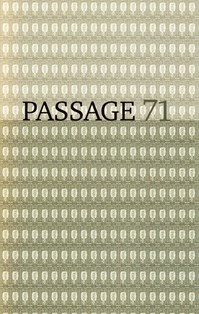Religionssatirens fødsel ud af grådighedskritikkens ånd
DOI:
https://doi.org/10.7146/pas.v29i71.24518Resumé
Dennis Meyhoff Brink: “The Birth of Religious Satire”
At the threshold of the twelfth century a seminal event occurred in European literature. For the first time in European history, satirical texts openly attacked the Christian Church exposing it as imbued with avarice, corruption, bribery, and greed for money. Satirical texts such as the Treatise of Garcia of Toledo, which describes how clerics worship the “martyrs’” Silver and Gold, and the so-called Money-Gospel in which the pope praises the bliss of wealth, gave birth to a new and distinctly anticlerical form of satire. Although this new anticlerical satire at first only constituted a small and anonymous underground movement, it was later continued and developed by satirists such as Erasmus, Molière, Swift, Diderot, Voltaire and Heine. In this way, anticlerical satire became a major tradition in modern European literature.
The article first describes how the European tradition for anticlerical satire was born out of an increasingly skeptical attitude towards clerical cupidity and simony in the eleventh and twelfth centuries. Secondly, it analyses the above mentioned satires by focusing on the grotesque differences between Christian ideals and clerical practice in the satires. Finally, it argues that this new anticlerical satire constituted a tradition of its own, which was fundamentally different from the carnivalistic tradition, made famous by Mikhail Bakhtin.
Downloads
Publiceret
Citation/Eksport
Nummer
Sektion
Licens
Forfattere, der publicerer deres værker via dette tidsskrift, accepterer følgende vilkår:
- Forfattere bevarer deres ophavsret og giver tidsskriftet ret til første publicering, samtidigt med at værket efter publiceringen er omfattet af en Creative Commons Attribution-licens, der giver andre ret til at dele værket med en anerkendelse af værkets forfatter og første publicering i nærværende tidsskrift.
- Forfattere kan indgå flere separate kontraktlige aftaler om ikke-eksklusiv distribution af tidsskriftets publicerede version af værket (f.eks. sende det til et institutionslager eller udgive det i en bog), med en anerkendelse af værkets første publicering i nærværende tidsskrift.
- Forfattere har ret til og opfordres til at publicere deres værker online (f.eks. i institutionslagre eller på deres websted) forud for og under manuskriptprocessen, da dette kan føre til produktive udvekslinger, samt tidligere og større citater fra publicerede værker (se The Effect of Open Access).





